Chatbot vs Conversational AI: Choose Wisely!
By Sonaksh Singh Rawat on
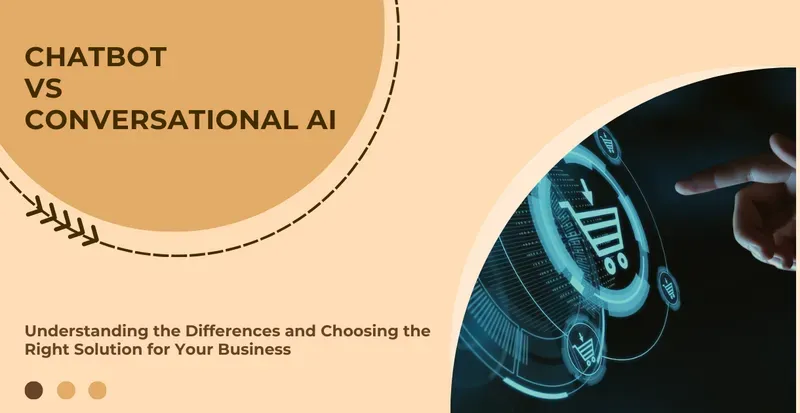
Frequently mistaken for the same thing, in chatbots vs conversational AI, both occupy distinct realms within the technological landscape. One can envision chatbots as friendly guides that follow predetermined scripts to resolve inquiries. However, their limitations become apparent when responses deviate from their programmed information, often resulting in broad and unhelpful answers.
Conversational AI, on the other hand, introduces a completely different dimension. These advanced systems interact with human language on a significantly deeper level, making them truly proficient in engaging conversations.
This article aims to delve into their unique characteristics and the factors that define their functionalities.
Chatbot vs Conversational AI: Introduction
Both intelligent systems are designed to simulate interactions that are similar to human communication, engaging users in dialogue that aims to be natural and seamless. They hold the potential to significantly transform customer service.
Chatbot
Chatbots are essentially digital entities that mimic real-life conversations, supporting both text and voice interactions. Operating on a predefined set of rules, these virtual assistants connect users’ questions with pre-set answers. Their strength lies in addressing routine queries, though their performance may dip with questions that fall outside their programmed knowledge base.
Despite their limitations, chatbots contribute significantly to convenience and efficiency, particularly in handling repetitive tasks. They are ubiquitous, found on websites, in messaging apps, and integrated into the smart speakers that occupy many living rooms.
Conversational AI
Conversational AI elevates the concept of chatbots to unprecedented heights. This advanced artificial intelligence utilizes natural language processing and machine learning to comprehend and interact with human language with extraordinary sophistication. Unlike traditional chatbots, which may falter, conversational AI boasts the ability to engage in meaningful conversations confidently.
It discerns the subtleties of dialogue and understands the user’s intent without fault, providing personalized and engaging experiences. This positions it as a valuable tool in various fields, including customer support, education, and entertainment, thereby redefining the standards of digital communication.
Chatbot vs Conversational AI: Comparison chart
Explore the intriguing world of the comparison chart between Conversational AI vs Chatbots:

Chatbots vs Conversational AI: Applications in Customer Service
In Chatbots vs conversational AI comparison, both are transforming the domain of customer support, each offering distinct advantages and limitations.
Chatbot
Advantages
- Round-the-Clock Assistance: Chatbots tirelessly provide support to customers 24/7, an invaluable service for companies with a global client base across different time zones.
- Efficiency Boost: Specializing in routine tasks like updates on orders or password resets, chatbots allow human agents to focus on more complex customer service areas, significantly improving operational efficiency.
- Economic Efficiency: By automating everyday tasks, organizations can streamline their customer support team, resulting in noticeable financial savings. Chatbots enable the strategic allocation of human resources to tasks requiring emotional intelligence and advanced problem-solving skills.
- Language Versatility: With their ability to overcome language barriers, chatbots serve a diverse customer base. Thus making them essential for businesses with international operations or those serving customers from various linguistic backgrounds.
Drawbacks
- Limited Perception: The inability of chatbots to fully grasp the nuances of human conversation may lead to misunderstandings. This potentially could frustrating customers seeking more meaningful and context-aware interactions.
- Struggle with Complex Challenges: While efficient with routine tasks, chatbots may falter when confronted with complex issues that require critical thinking, highlighting the irreplaceable value of human intervention for such scenarios.
- Lack of Personalization: Reliance on pre-defined responses can make interactions with chatbots feel impersonal, lacking the customized engagement that human agents provide, which significantly enhances customer experience.
Conversational AI
Advantages
Natural Language Understanding: The cornerstone of conversational AI is its advanced natural language understanding capabilities. These systems excel at interpreting customer queries, discerning their intent and nuances, which allows them to deliver precise and highly personalized responses. This feature not only enhances the quality of customer service but also its efficiency.
Conversations Without Limits: Unlike standard chatbots, conversational AI is engineered for seamless, unrestricted conversations, capable of addressing complex and nuanced issues. Its versatility is key in managing a wide array of customer queries and concerns, showcasing an unmatched breadth in operational capability.
Emotional Intelligence: Incorporating sentiment analysis, these systems can detect emotional subtleties in customer interactions. This sensitivity enables conversational AI to adjust its communication style, demonstrating empathy and thereby enriching the overall customer experience.
Customization: The technology shines in tailoring responses to meet the individual preferences and needs of each customer. This level of customization fosters a stronger connection between customers and companies, making interactions feel more personal and relevant.
Drawbacks
Elevated Initial Investment: The setup for conversational AI platforms requires more substantial financial resources compared to simpler chatbot solutions. This is due to the need for sophisticated technologies, comprehensive datasets for training, and ongoing maintenance, which may present obstacles, particularly for smaller businesses with limited budgets.
Privacy Issues: The process of collecting and analyzing customer data for personalized experiences raises concerns about privacy. Customers may feel uneasy about the security of their data and the risk of it being mishandled. Addressing these concerns effectively is crucial for building trust and ensuring compliance with privacy regulations.
Scarce Accessibility: Despite significant advancements, conversational AI is still on its journey to widespread adoption. The rapidly evolving tech landscape sometimes makes it challenging for businesses to find or adapt solutions that fully meet their unique needs. However, as the technology matures, its accessibility is expected to improve.
Chatbots vs Conversational AI: Platforms
Intercom
Intercom stands out by offering chatbot services specifically designed for customer support, marketing, and sales efforts. The service focuses on providing a personalized communication experience aimed at ensuring customers’ needs are not just recognized but deeply understood.
As a platform, Intercom excels in narrowing the communication gap between businesses and their customers. It represents a comprehensive solution, making every interaction meaningful and impactful.
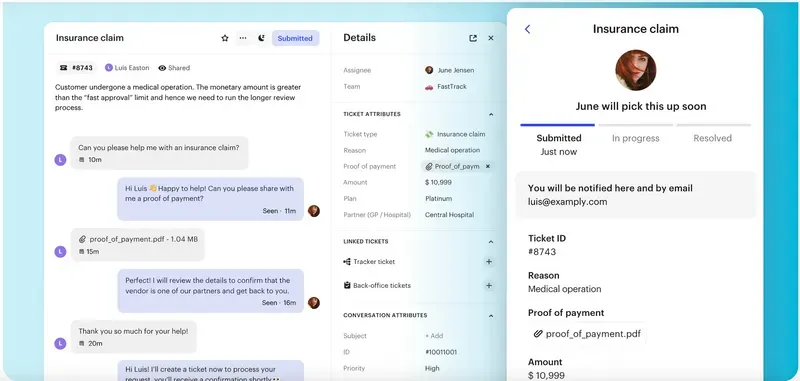
The tool features an effortless integration with your website, enabling personalized conversations that foster a strong connection between businesses and their audience. It skillfully combines automation with a human touch, making sure that every inquiry is given proper consideration.
Intercom is designed to be there for customers at any time—whether it’s for late-night browsing or answering urgent questions, ensuring that every user feels acknowledged and appreciated.
LivePerson
LivePerson stands as a transformative force in the realm of digital messaging, revolutionizing the way individuals engage with brands. Imagine an adaptable chatbox platform crafted to eliminate the communication barriers, enabling immediate assistance without the delays or the complexity of traditional phone menus.
By effortlessly integrating into the digital environment, LivePerson ensures that support or answers to questions are just a chat away, anytime and anywhere. This innovative method significantly improves the customer experience and fundamentally changes the perspective on online interactions with companies.
LivePerson excels in utilizing AI-driven conversational commerce to connect businesses with their customers through messaging. This strategy focuses on enhancing the bond between brands and their audience, ensuring a smooth and continuous interaction facilitated by the advanced capabilities of messaging.
Chatfuel
At Chatfuel, there is a commitment to immersing users in the intriguing world of chatbot technology. The platform is expertly designed to revolutionize the customer interaction experience. With Chatfuel leading the way, users are investing in more than just a tool; they are adopting an innovative solution that simplifies audience engagement, making it more enjoyable and incredibly effective.
Chatfuel stands out as more than a mere tool; it is a creator of conversations, empowering businesses to craft sophisticated chatbots that provide an experience as seamless as conversing with a friend.
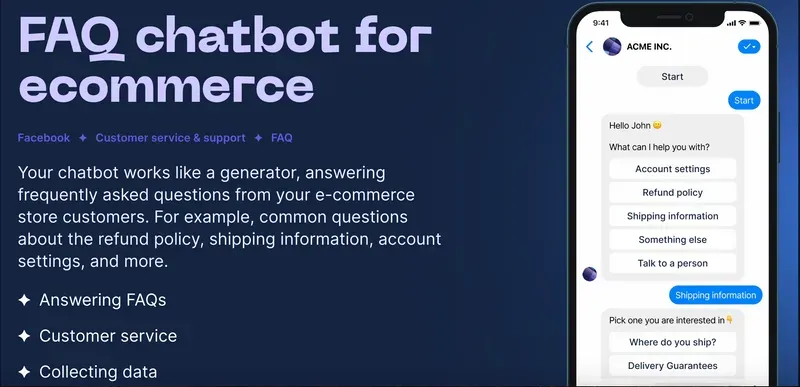
Zendesk Chat
Zendesk Chat serves as a pivotal tool for instant customer engagement. As an integral component of the comprehensive Zendesk suite, it enhances businesses’ ability to deliver superior, real-time support.
Distinguished by its easy-to-navigate design and user-centric functionalities, Zendesk Chat excels in building authentic rapport and achieving swift problem resolution, thereby elevating the overall customer service experience. It ensures that every inquiry is promptly addressed, cultivating a foundation of reliability and credibility for companies.
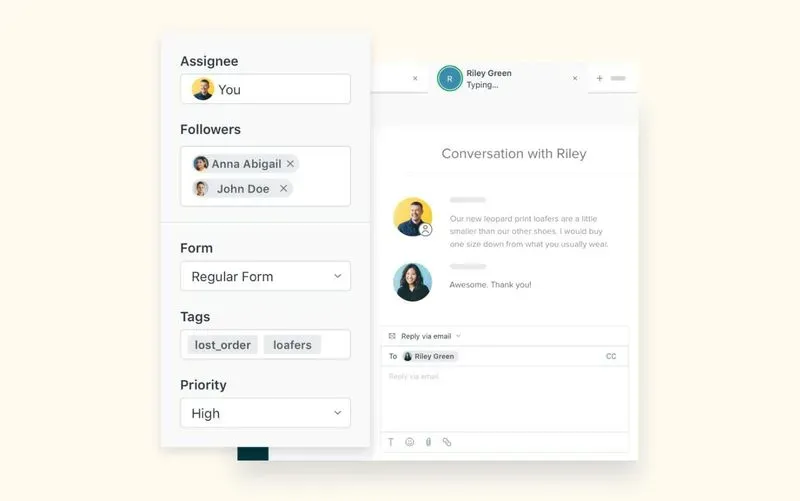
It offers capabilities for real-time chat and messaging, significantly enhancing customer satisfaction by facilitating quick and efficient responses.
IBM Watson Assistant
IBM Watson Assistant stands out as a leading example of innovation in the conversational AI field. Developed by the experts at IBM, it represents a significant advancement in enabling fluid conversations between machines and humans.
Thanks to its superior natural language understanding capabilities, Watson Assistant allows businesses to improve their customer service, guaranteeing that inquiries receive prompt and intelligent answers. Its intuitive nature and flexibility position it as more than just a tool; it’s a forward-thinking ally primed to transform the nature of customer interaction in the modern era.
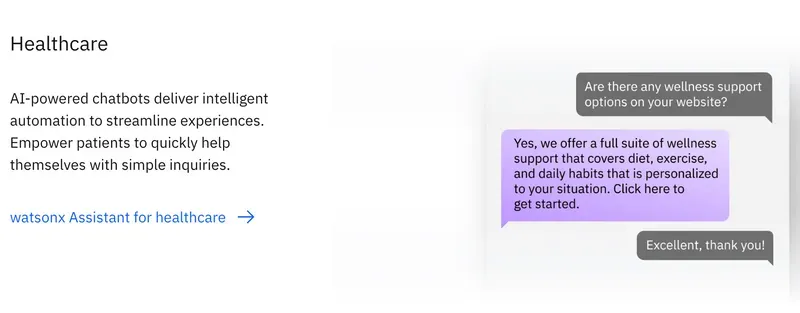
This is a state-of-the-art conversational AI assistant designed for seamless integration with chat interfaces in applications and devices, thereby enriching the user experience with its smooth and natural interactions.
Google Dialogflow
Google Dialogflow represents the leading edge in conversational AI, providing the framework required to develop responsive and intelligent virtual agents. This advanced technology transcends mere query responses, offering a conversational experience akin to engaging with another human.
It enables the creation of rich, personalized interactions across various platforms, ensuring user queries are comprehensively understood and appropriately addressed. Dialogflow serves as the foundation for businesses aiming to revolutionize their customer engagement with next-generation virtual assistants.
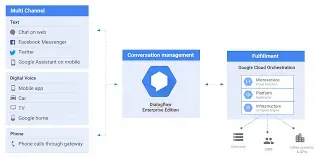
This solution grants the capability to facilitate seamless conversational interactions that span text and voice interfaces, enhancing the accessibility and efficiency of user communications.
Microsoft Bot
The Microsoft Bot Framework is heralded as a remarkably flexible toolkit for developers, empowering them to create intelligent, conversational interfaces. It is likened to a master craftsman’s toolkit for assembling sophisticated bots that can engage in natural conversations with users across different platforms.
The framework is engineered to streamline the development and deployment of interactive bots capable of understanding and responding to human language. This makes it a perfect solution for developing anything from straightforward Q&A bots to intricate, dialogue-based virtual assistants. The potential for enhancing digital communication with the Microsoft Bot Framework is boundless, marking a new era in software interaction.
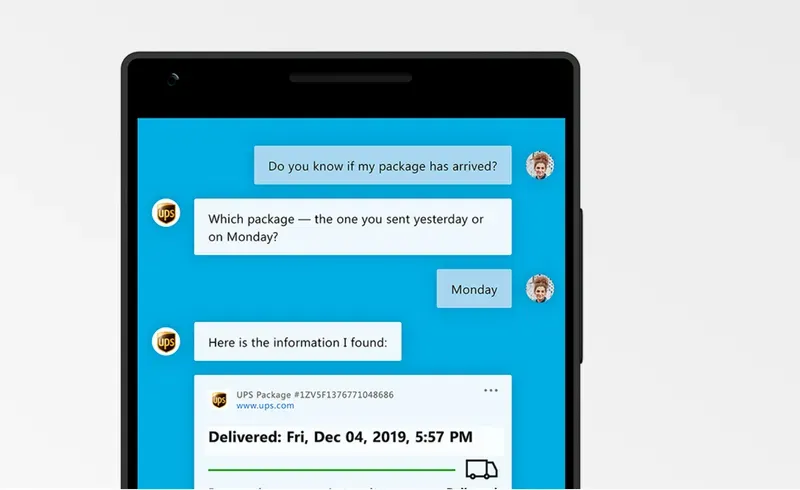
This conversational AI toolkit offers a comprehensive array of tools and services purposely built for developing engaging conversational AI experiences across various platforms.
Rasa
Rasa represents an open-source framework that is expertly tailored for developers and enthusiasts keen on exploring the realm of conversational AI. It distinguishes itself by its capacity to facilitate sophisticated, AI-powered chatbots and voice assistants, enhancing the interaction between users and technology.
Designed with customer needs at the forefront, Rasa emerges as an exceptional tool for those aiming to create intelligent and interactive applications. It provides a flexible and intuitive environment that suits both experienced developers and newcomers.
As an open-source conversational AI platform, it focuses on elevating the quality of AI assistants and chatbots. The platform champions the advancement of dialogue interactions, ensuring each conversation is as natural and engaging as possible, thereby transforming the communication landscape.
The Future of Chatbots vs Conversational AI
The evolution of chatbots alongside conversational AI is paving the way for a future of increased intelligence and personalization. These technologies are evolving to address more complex questions, work in harmony with a variety of technologies, and specialize in specific domains.
At the same time, conversational AI is advancing to more accurately comprehend human emotions and offer proactive support, integrating effortlessly into business environments. In essence, a future where chatbots and conversational AI work together promises to significantly improve communication between humans and computers.
Conclusion
Exploring the realms of digital interaction, chatbots and conversational AI emerge as two innovative avenues for improving communication between humans and machines. Conversational AI, leveraging advanced technologies like machine learning and natural language processing, advances to offer dynamic interactions imbued with a sense of human touch.
As conversational AI continues to evolve, it promises to transform customer experiences with unmatched customization and engagement, leading to increased satisfaction. Meanwhile, chatbots excel in managing direct, scripted conversations with efficiency. The decision to implement a chatbot or explore the capabilities of conversational AI ultimately depends on the specific needs and goals of each organization, directing them towards their perfect communication solution.
FAQs
Are Chatbots and Conversational AI the same?
Chatbots operate using the information that has been entered in the system, while Conversational AI continuously learns and adapts to provide a personalized experience.
Which is better Chatbots or Conversational AI?
The choice between chatbots and Conversational AI depends on the specific needs of a business. While chatbots are ideal for handling repetitive tasks, Conversational AI is better suited for providing personalized solutions to customers.




